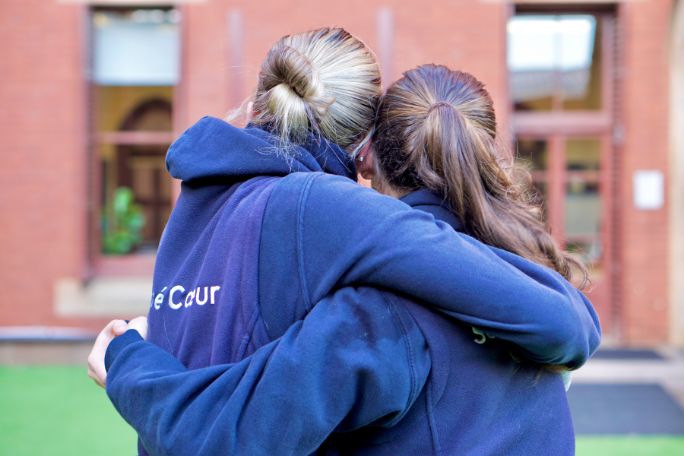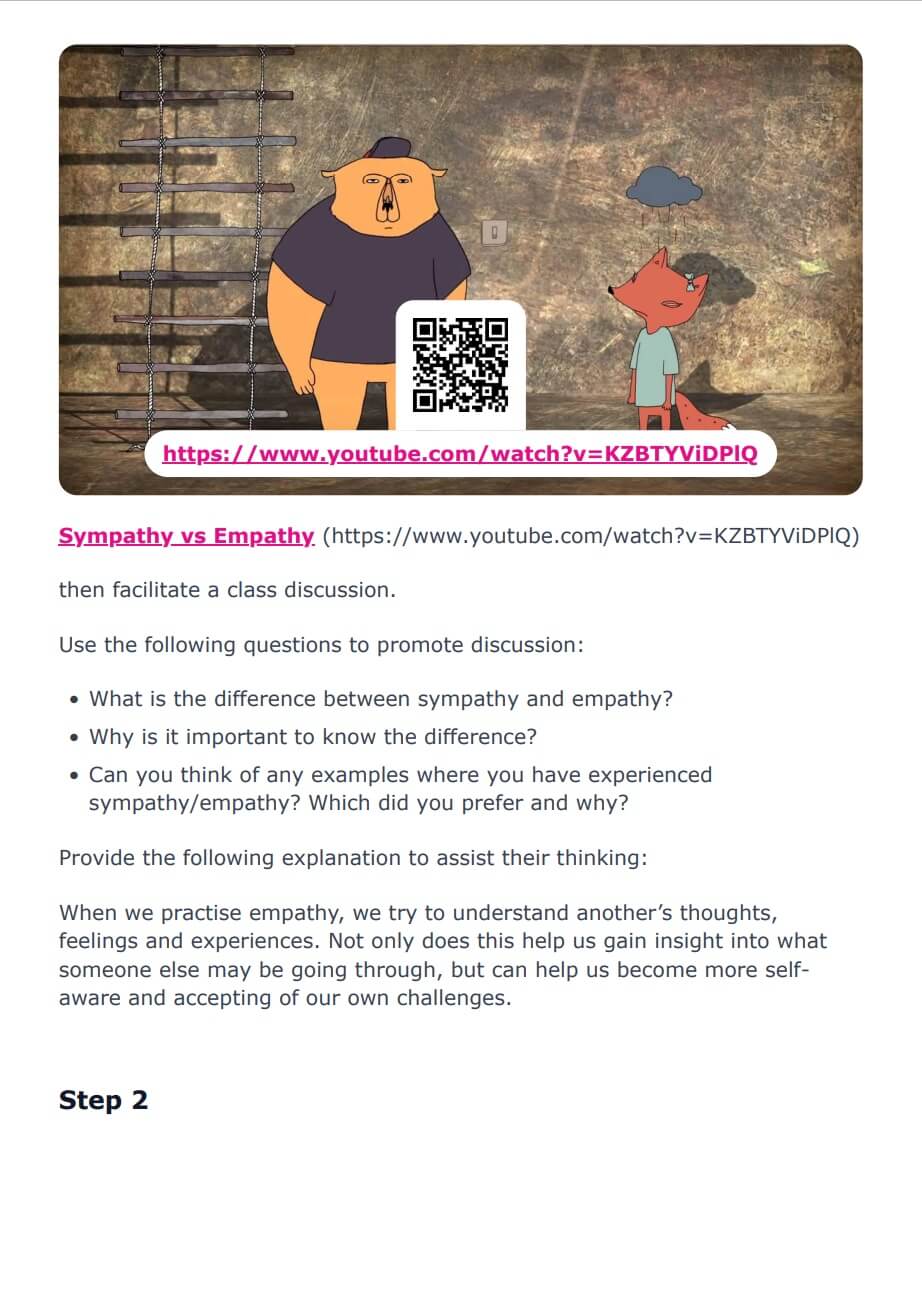Lesson summary
Students will explore what it means to be empathetic, kind and compassionate to themselves and others. They will carry out acts of kindness and identify how these acts can enhance the wellbeing of everyone involved.
Learning intentions:
Students will...
- understand the differences between empathy, kindness and self-compassion and practise applying these concepts to their everyday life.
Success criteria:
Students can...
- explain the difference between sympathy and empathy and identify some factors that help and hinder practising empathy
- design and carry out random acts of kindness and evaluate the impact their actions have on wellbeing
- give examples of self-compassion and how they could be applied to different scenarios.
Lesson guides and printables
Curriculum links
Select your curriculum from the options below.
Lesson details
Skills
- Communication
- Social skills
- Initiative
- Global citizenship
- Empathy
- Creativity
- Community engagement
Curriculum Mapping
Health and Physical Education – Years 7 and 8 – Personal, social and community health – Interaction with others:
- Examine the roles of respect, empathy, power and coercion in developing respectful relationships (AC9HP8P04).
General Capabilities – Personal and Social Capability – Years 7 and 8 – Social management:
- Demonstrate communication skills in a range of contexts, responding to the enablers of, and barriers to, effective verbal and non-verbal communication.
Syllabus outcome: (PD4-3)
UN Sustainable Development Goals
Target 4.7: By 2030, ensure that all learners acquire the knowledge and skills needed to promote sustainable development, including, among others, through education for sustainable development and sustainable lifestyles, human rights, gender equality, promotion of a culture of peace and non-violence, global citizenship and appreciation of cultural diversity and of culture’s contribution to sustainable development.
Resources Required
- Bingo template (2 per student)
- Self-compassion Scenarios (1 per student)
- Sympathy vs Empathy video
- Science of Kindness video
Additional Info
This lesson has been created in collaboration with LifeChanger Foundation to support teachers to deliver high-quality Health and Physical Education, as well as Social and Emotional Learning experiences.

LifeChanger’s facilitated programs and workshops aim to empower young people (Year 5-12) to live thriving, resilient lives. For more information, visit lifechanger.org.au.




Welcome back!
Don't have an account yet?
Log in with:
Create your free Cool.org account.
Many of our resources are free, with an option to upgrade to Cool+ for premium content.
Already have an account?
Sign up with:
By signing up you accept Cool.org's Terms and Conditions(Opens in new tab) and Privacy Policy(Opens in new tab).